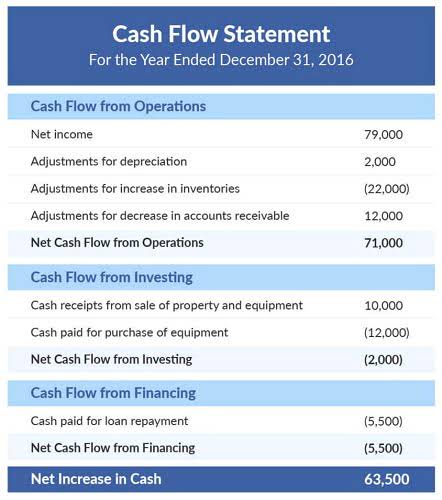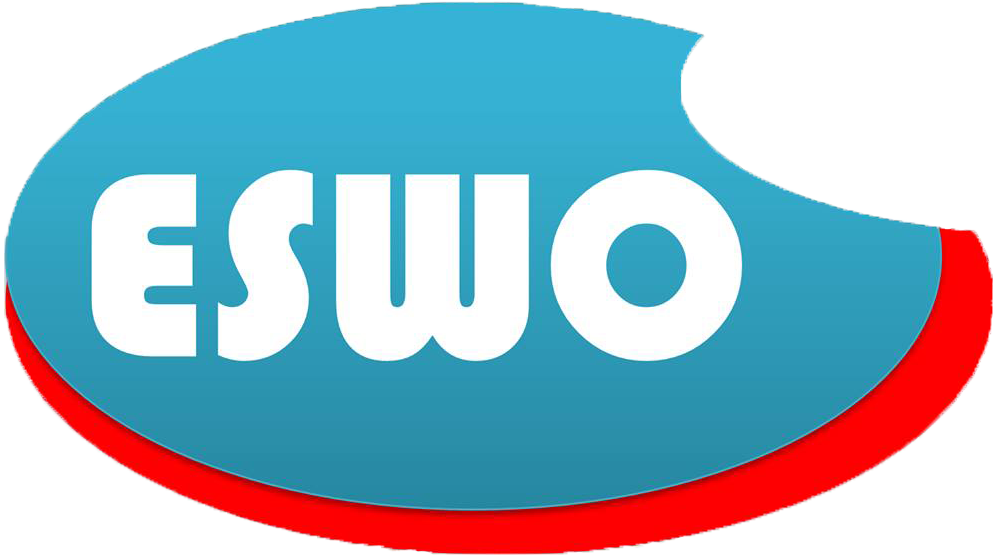Direct, Indirect, Or Both Methods Of Reporting Operating Statement Of Cash Flows
Content
- How To Prepare A Statement Of Cash Flows Using The Indirect Method
- Understanding The Indirect Method
- Statement Of Cash Flows Indirect Method
- How To Calculate Operating Cash Flow Using The Direct Method
- Creating Cash Flow Statements: Direct Vs Indirect Cash Flow
- Indirect Method For A Cash Flow Statement Example
- Step 2: Prepare The Investing Activities Section
- Efrag Draft Comment Letter On Supplier Finance Arrangements

Prepare the operating activities section of the statement of cash flows for Phantom Books using the indirect method. Follow the format presented in Figure 12.5 “Operating Activities Section of Statement of Cash Flows (Home Store, Inc.)”. Investing and financing transactions are critical activities of business, and they often represent significant amounts of company equity, either as sources or uses of cash. These financing activities could include transactions such as borrowing or repaying notes payable, issuing or retiring bonds payable, or issuing stock or reacquiring treasury stock, to name a few instances.
Purchases or sales of assets, loans made to vendors or received from customers, or any payments related to mergers and acquisitions (M&A) are included in this category. In short, changes in equipment, assets, or investments relate to cash from investing. The first section of the statement of cash flows deals with the company’s changes in working capital. Changes in working capital are subtracted out/added to the firm’s net income as indicated in Item 2 above. The cash account on the balance sheet should reflect the total cash available to the firm as calculated on the statement of cash flows. In the case of Propensity Company, the decreases in cash resulted from notes payable principal repayments and cash dividend payments.
How To Prepare A Statement Of Cash Flows Using The Indirect Method
For your business, this would likely include purchase of capital equipment, company vehicles, and the down payment for a new building. Next, adjust your net income to account for non-cash expenses, like depreciation of your assets. Under the U.S. reporting rules, a corporation has the option of using either the direct or the indirect method. However, surveys indicate that nearly all large U.S. corporations use the indirect method. Well known statistics suggest that over 50% of small businesses have negative cash flow.
- Next, adjust your net income to account for non-cash expenses, like depreciation of your assets.
- Since it’s based on adjustments, the indirect cash flow statement doesn’t provide enough insight into cash transactions.
- Cash flow statements are powerful financial reports, so long as they’re used in tandem with income statements and balance sheets.
- Cash transactions that result from interest revenue, dividend revenue, and interest expense are all left within operating activities because they happen regularly.
- If there is an amount that is still owed, then any differences will have to be added to net earnings.
- Instead, that information goes to the cash flow statement, which is then used to compute revenues and expenses in the income statement.
- Changes made in cash, accounts receivable, depreciation, inventory, and accounts payable are generally reflected in cash from operations.
However, theFinancial Accounting Standards Board prefers companies use the direct method as it offers a clearer picture of cash flows in and out of a business. However, if the direct method is used, it is still recommended to do a reconciliation of the cash flow statement to the balance sheet. This section is a summation of the changes to the fixed asset account or the current liabilities account, with the exception of accounts payable.
Most larger companies choose the indirect method, at least in part because of the lower time investment, while analysts often prefer it as well because it lets them see for themselves what adjustments have been made. The direct method, on the other hand, is often the best choice for smaller businesses, as the transparency into operating cash flow details helps them better determine their short-term cash availability planning needs.
When you add the expenses back into the net income, either subtract the amounts in parentheses or add negative numbers to arrive at the correct income total. Either is acceptable according to the generally accepted accounting principles and International Financial Reporting Standards guidelines. Let’s say we’re creating a cash flow statement for Greg’s Popsicle Stand for July 2019. Transactions that show a decrease in liabilities result in a decrease in cash flow.
Understanding The Indirect Method
In applying the indirect method, a negative is removed by addition; a positive is removed by subtraction. Indirect cash flow method, on the other hand, the calculation starts from the net income, and then we go along adjusting the rest. Calculate your net income, which is a simple measure of your revenues minus expenses, interest, and taxes. You can look at the accrual net income figures on your income statement to do so. All of these adjustments are totaled to adjust the net income for the period to match the cash provided by operating activities.
There are two methods of producing a statement of cash flows, the direct method, and the indirect method. Depreciation expense reduces profit but does not impact cash flow (it is a non-cash expense). Similarly, if the starting point profit is above interest and tax in the income statement, then interest and tax cash flows will need to be deducted if they are to be treated as operating cash flows. As for the balance sheet, the net cash flow reported on the CFS should equal the net change in the various line items reported on the balance sheet. This excludes cash and cash equivalents and non-cash accounts, such as accumulated depreciation and accumulated amortization. For example, if you calculate cash flow for 2019, make sure you use 2018 and 2019 balance sheets. Increases in net cash flow from financing usually arise when the company issues share of stock, bonds, or notes payable to raise capital for cash flow.
The direct method shows the major classes of gross cash receipts and gross cash payments. Under the indirect method, the cash flows statement will present net income on the first line. The following lines will show increases and decreases in asset and liability accounts, and these items will be added to or subtracted from net income based on the cash impact of the item.
If you don’t have a report for a previous accounting period, either use the amount of cash on hand that you started with or simply skip this step. Your ending cash balance will be the total net cash flows you calculated on your statement of cash flow for the period. Combine net cash flows from operating, financing, and investing activities. Take the last 3 lines of each section in your statement of cash flow and add them together.
Statement Of Cash Flows Indirect Method
Stakeholders – including lenders, investors, your team, and even the government – use this information to determine where your money is coming from and how it’s being spent. Any jump in a liability means that Liberto paid less cash during the period than the debts that were incurred. Postponing liability payments is a common method for saving cash and keeping the reported balance high.

Cash and cash equivalents are consolidated into a single line item on a company’s balance sheet. It reports the value of a business’s assets that are currently cash or can be converted into cash within a short period of time, commonly 90 days.
How To Calculate Operating Cash Flow Using The Direct Method
You’ll also notice that the statement of cash flows is broken down into three sections—Cash Flow from Operating Activities, Cash Flow from Investing Activities, and Cash Flow from Financing Activities. For example, when we see $20,000 next to “Depreciation,” that $20,000 is an expense on the income statement, but depreciation doesn’t actually decrease cash. Since it’s simpler than the direct method, many small businesses prefer this approach. Also, when using the indirect method, you do not have to go back and reconcile your statements with the direct method. While income statements are excellent for showing you how much money you’ve spent and earned, they don’t necessarily tell you how much cash you have on hand for a specific period of time.
The income statement lets you know how money entered and left your business, while the balance sheet shows how those transactions affect different accounts—like accounts receivable, inventory, and accounts payable. In the direct method cash flow, only the operations section of the cash flow statement is affected.
- Add or subtract from the net income noncash gains, losses or expenses, including depreciation, amortization, depletion, gains or losses from asset sales and losses from accounts receivable.
- Cash totaling $37,000 was used for investing activities during the year.
- The operating activities section starts with net income per the income statement and adjusts it to remove the significant non‐cash items.
- One advantage of using the cash flow indirect method is that you can easily pick the starting net income from your income statement.
- Cash flows from financing activities always relate to either long-term debt or equity transactions and may involve increases or decreases in cash relating to these transactions.
Non-cash ExpensesNon-cash expenses are those expenses recorded in the firm’s income statement for the period under consideration; such costs are not paid or dealt with in cash by the firm. Under U.S. GAAP, interest paid and received are always treated as operating cash flows. In this section, add or subtract all actions the company has made to finance its operations for the period to calculate net cash from financing activities. Analyzing changes in cash flow from one period to the next gives the investor a better idea of how the company is performing, and whether a company may be on the brink of bankruptcy or success. The CFS should also be considered in unison with the other two financial statements. Credit purchases are reflected by an increase in accounts payable on the balance sheet, and the amount of the increase from one year to the next is added to net earnings. Cash from financing activities includes the sources of cash from investors and banks, as well as the way cash is paid to shareholders.
Some candidates may qualify for scholarships or financial aid, which will be credited against the Program Fee once eligibility is determined. Please refer to the Payment & Financial Aid page for further information. Factors like the industry you’re working in and the audience you’re reporting for will make a difference. And so will the data you have available and the insights you hope to generate. Visit this post next to learn about balancing GAAP and IFRS with other reporting needs. This post is to be used for informational purposes only and does not constitute legal, business, or tax advice.
Creating Cash Flow Statements: Direct Vs Indirect Cash Flow
It doesn’t even break down sources of cash, which can be disadvantageous if you want to analyze your sources of cash. On the upside, the indirect method makes it simpler to figure out the cause should there be a difference between your net profit and closing bank position. The investing and financing sections of the statement of cash flows are prepared in the same way for the indirect method as for the direct method. The cash indirect method cash flow flow statement paints a picture as to how a company’s operations are running, where its money comes from, and how money is being spent. Also known as the statement of cash flows, the CFS helps its creditors determine how much cash is available for the company to fund its operating expenses and pay down its debts. The CFS is equally as important to investors because it tells them whether a company is on solid financial ground.
At the end of the graphic there is a final reconciliation of the cash account. Beginning cash is what the balance https://www.bookstime.com/ was on the balance sheet last period and we have indirectly shown how to get to the cash balance for this period.
Stakeholders and investors often pay attention to the indirect method. The indirect method is commonly used to determine how a business generates cash and how the cash generated is disbursed or used.

An evaluation of a cash flow statement should involve an assessment of the sources and uses of cash and the main drivers of cash flow within each category of activities. Cash Flow for Month Ending July 31, 2019 is $500, once we crunch all the numbers. After accounting for all of the additions and subtractions to cash, he has $6,000 at the end of the period. This section covers revenue earned or assets spent on Financing Activities.
Fathom uses the indirect method to calculate the movement of cash in the period from operating, investing and financing activities. A statement of cash flows is a budget summary that shows changes in the cash and cash equivalents of a business. It essentially displays how money moved in and out of a company over a given period of time. In doing so, a CFS acts as a bridge between the balance sheet and income statement. Significant non‐cash items on the income statement include depreciation and amortization expense and gains and losses from the sales of assets or retirement of debt. Although the total cash provided by operating activities amount is the same whether the direct or indirect method of preparing the statement of cash flows is used, the information is provided in a different format.
Both methods get the same result, but many accountants prefer the indirect method because they can prepare it more easily using information from existing financial documents. At the end of each accounting period, companies prepare financial statements showing how much money they have made or spent. The indirect method for a cash flow statement is a popular way to do this. You might need to know how to prepare an indirect method statement of cash flows if you work in a company’s accounting or finance department. In this article, we explain how to create a cash flow statement using the indirect method and provide an example to follow.
The direct method of creating the cash flow statement uses actual cash inflows and outflows from the company’s operations, instead of accrual accounting inputs. This contra asset account is not typical of the other asset accounts shown on Home Store, Inc.’s balance sheet since contra asset accounts have the effect of reducing assets. Thus as this accumulated depreciation account increases, it further reduces overall assets. Terminology can get confusing, so here is a simple way to look at it.
Efrag Draft Comment Letter On Supplier Finance Arrangements
In summary, information about the sources and uses of cash helps creditors, investors, and other statement users evaluate the company’s liquidity, solvency, and financial flexibility. Greg purchased $5,000 of equipment during this accounting period, so he spent $5,000 of cash on investing activities. For most small businesses, Operating Activities will include most of your cash flow. If you run a pizza shop, it’s the cash you spend on ingredients and labor, and the cash you earn from selling pies. If you’re a registered massage therapist, Operating Activities is where you see your earned cash from giving massages, and the cash you spend on rent and utilities. These three activities sections of the statement of cash flows designate the different ways cash can enter and leave your business.
